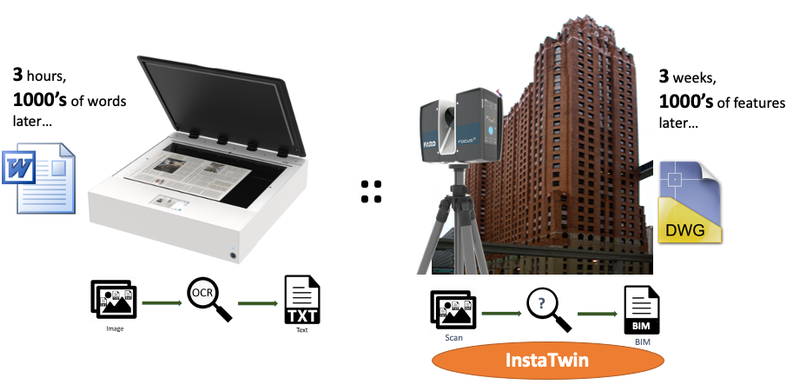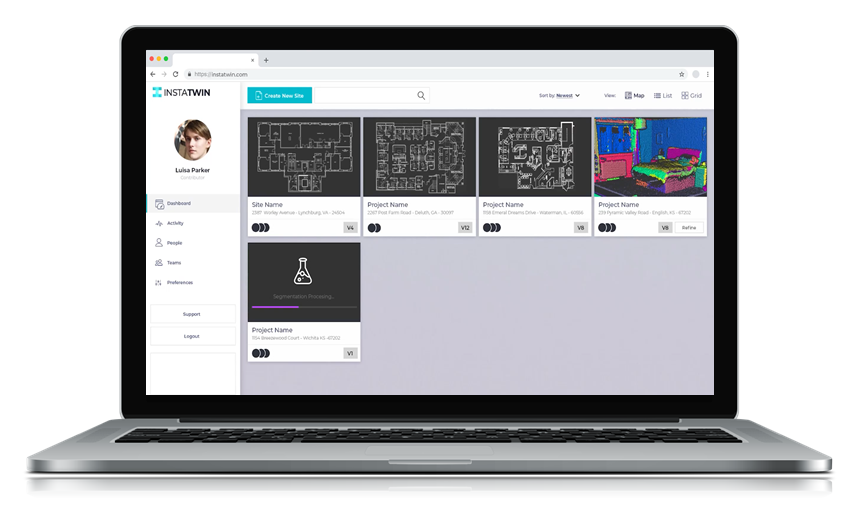Deep Reality’s InstaTwin creates 3D models of the Built Environment. It collects 3D data from sensors such as laser scanners (i.e., LiDAR) and 360 cameras and converts these data into digital representations of 3D objects. The resulting 3D model is sometimes called a “digital twin” or building information model (BIM).
To understand this digitization process, consider the analogous process of flatbed scanning, where a scanner captures a pixelized image of a physical document. The captured image provides a digital record (a 2D collection of pixels), but the true value of the scan resides in the words within the image. It is time consuming to transcribe these words manually, but technologies such as Optical Character Recognition (OCR) significantly increased the accessibility to and utility of the information in the scanned document.
Scanning a building is analogous to scanning a document. Instead of a flatbed, a 3D laser scanner spins on a tripod and measures the contents of a building. The captured image provides a digital record (a 3D collection of points called a “point cloud), but the true value of the scan resides in the objects and building elements within the point cloud. It is even more time consuming to transcribe these objects than to transcribe words, and as of today, there exists no equivalent to OCR for creating BIMs.

We introduce InstaTwin, a platform that automatically generates 3D building models from scans. InstaTwin harnesses the power of artificial intelligence (AI) to recognize objects within the 3D point cloud, just as OCR recognizes words within the 2D collection of pixels. InstaTwin empowers asset owners, architects, engineers, and facility managers to make better, faster, and more efficient decisions about the Built Environment.
InstaTwin is a data repository and processing framework that users can access online. Collaborators and users submit data, test algorithms, process data into 3D models, view results, and download BIMs. Since our framework can benefit industry immediately, it incentivizes users to supply data, train models, and support its development.

